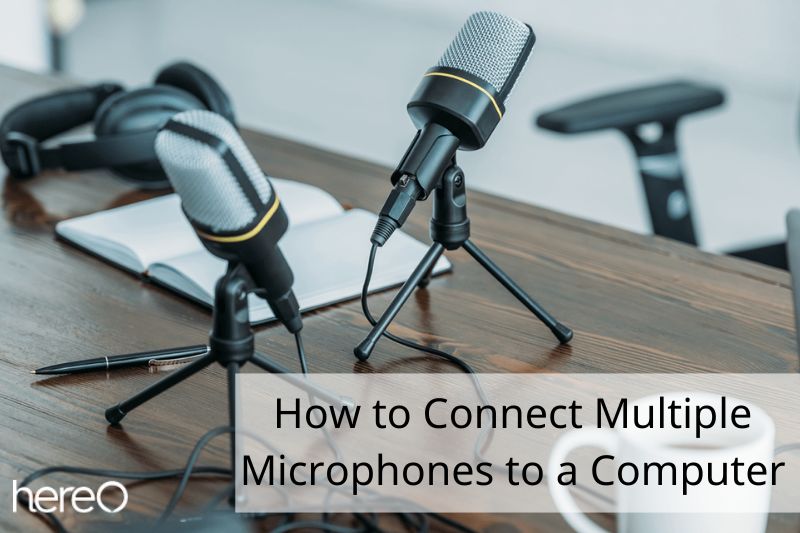There are a variety of instances when you might wish to record two or more mics at once, including recording music, hosting a live broadcast, recording a podcast with many contributors, and more. In this article, we will look into how to connect multiple microphones to a computer.
Contents
Is It Possible to Record With 2 or More Mics?
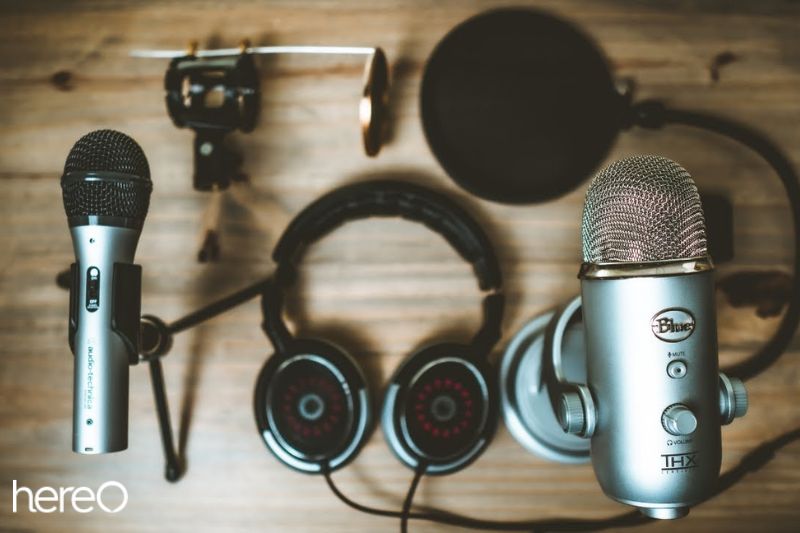
Since modern recording equipment is more widely available and more reasonably priced than ever, microphones have made it possible for people all around the world to share everything from songs to podcasts.
Although there are a few things to be aware of first, the good news is that you can connect numerous microphones and audio inputs to record on the same computer at the same time.
In order to achieve the greatest sound while recording from many devices at once, it takes some effort and preparation. The solution is not as simple as connecting in several microphones and pressing record.
Reasons to Connect Multiple Mics to Computer

Multiple speaking voice applications
- Creating a podcast that features multiple speakers
- Recording multiple voices for a YouTube audio recording
- Multi-voiced live streaming video
Multiple musical sound source applications
Since the advent of the recording studio, using a large number of microphones to record musicians or vocalists has been quite prevalent. Here are some typical situations that we might employ in our home studios:
- multiple vocalists
- Acoustic guitar and a vocalist
- various guitar amps
- Putting a drum sets microphones in place
- A full band recording
How to Connect Multiple Microphones to a Computer
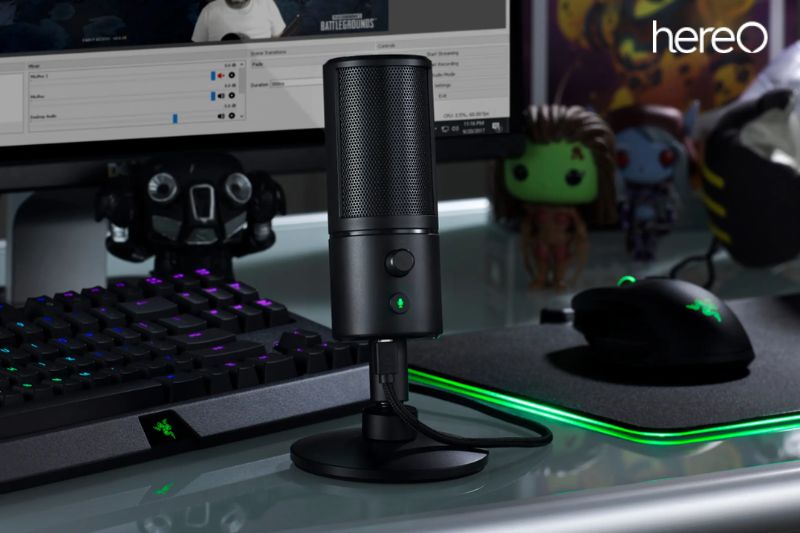
Multiple USB microphones
If you have multiple USB microphones, all you need to do is plug each one into a USB port on your computer. You can connect as many microphones as you want as long as there are enough open USB ports for them all.
That’s truly all there is to it. When you initially put in the microphone, you might receive a prompt and the driver will likely install automatically if the microphones need any driver software.
As you don’t have as much control over the volumes, balance, and sound of the mics as you do with the other methods, this method is best suited to non-musical applications.
Multiple audio interface XLR inputs
It is advised to connect the microphones to various XLR inputs on an audio interface if you are using them in conjunction with other microphones for any kind of musical application.
These programs require audio interfaces, which will provide you with superb sound quality. Out of all the techniques mentioned here, they allow you the most control over your sound and include high-quality audio drivers.
Your audio interface must be thunderbolt or USB-connected to your computer, and the driver software must be installed. Then, all that’s required is to connect each microphone with an XLR cable to a free input on the audio interface.
Each microphone should have its own track in your recording program if you are recording. For this, I advise utilizing DAW (Digital Audio Workstation) software; see the part below titled “Software configuration for recording multiple mics.”
Make careful to choose the appropriate microphone input for each track so that each microphone is recorded on a separate track.
This makes possible the method’s major advantage, which is that you have each microphone isolated on a different track, giving you the freedom to mix the levels when your recording is complete.
The cost of an audio interface varies greatly. The more inputs it has, the more it costs. Therefore, this procedure can get expensive if you require a lot of inputs.
Multiple mixer XLR inputs
The audio interface multiple inputs technique and this approach are comparable. A mixer is utilized rather than an audio interface.
Your microphones are plugged into the mixer’s available XLR inputs. The mixer is linked to the computer using one of the methods listed below:
- Connect your computer’s available USB port with the mixer’s USB output.
- A stereo input on an audio interface linked to your computer should be connected to the mixer’s stereo audio output.
- Connect your computer’s stereo input with the mixer’s stereo audio output.
The third option is not advised because it will likely result in the poorest sound quality. The second choice is the most expensive because an audio interface and mixer are required. The first option is the simplest.
This technique works best for live situations where numerous microphones are required. Taking live video of a band performing, or live streaming with several sound sources, are two examples.
You won’t receive all of your microphones on separate tracks, unlike with the audio interface method. The audio from all the microphones will be on a single stereo track in your recording software. As a result, you must get the mix right before recording because it cannot be changed later.
Issues of Using Multiple Microphones
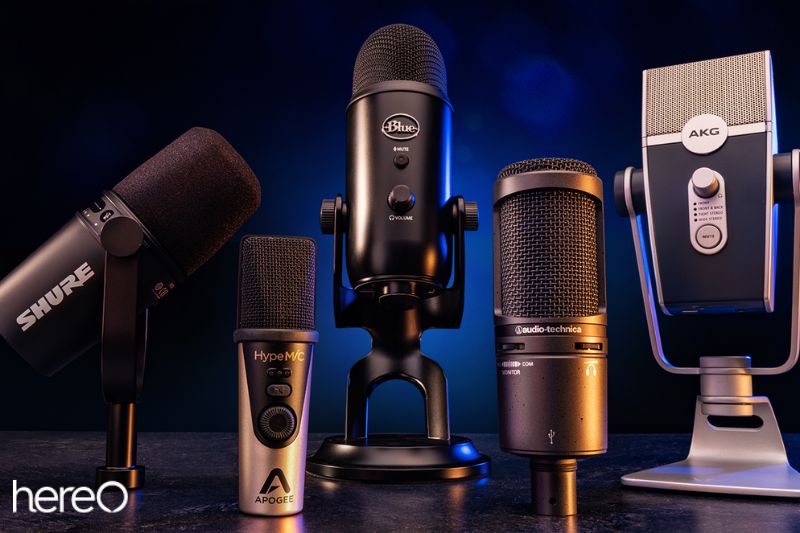
Delay and Echo
Mic positioning is essential when recording simultaneously with two or more input connections to prevent latency and echo.
These problems can be caused by a number of things, including the physical separation between microphones, the various recording tools employed, and even minor variations in microphone placement.
In essence, sound will be picked up first by the input device closest to the source of the sound and then by the second. If you don’t sync your recordings later in post-production, it may result in an undesired delay.
Using a direct box or mixer when connecting numerous mics is one efficient technique to prevent delay. You can send a single channel into the computer using these devices to merge feed signals from numerous sources into one.
You can lower the possibility that delay or echo will become a problem in your recordings by reducing the number of connections between your microphones and your recording setup.
The kind and caliber of the used mic cables are an additional crucial factor. Low-jitter digital cables can assist guarantee clear audio signals are transmitted between devices, while high-quality cables with appropriate shielding will reduce interference caused by electrical noise.
Additionally, keeping microphone cables short can lessen the likelihood of delay or echoes when they are sent over greater distances. Producing excellent audio recordings free of delay and echo difficulties requires employing the proper microphone placement techniques.
Sound Bleed
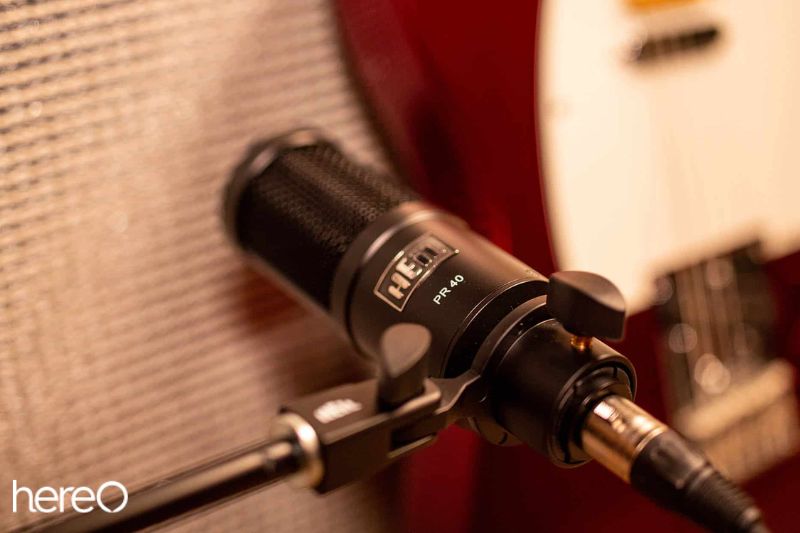
When another recording device in the same space mistakenly records sound, this is known as sound bleed. This can occur when recording something like a drum set with multiple mics.
In some circumstances, sound bleed might be helpful when you’re attempting to record a variety of sounds to create a unified recording. When you’re trying to record two or more noises in the same location, for instance, this can happen.
However, when podcasting without employing a cardioid polar pattern for each mic, this can frequently turn into an issue.
Consider isolating each device into its own recording location to prevent bleed.
Crosstalk and Ground Noise
When recording with many microphones attached to a single computer, external sounds aren’t the only potential problem you can encounter.
When you have multiple devices recording at once, crosstalk, or sound artifacts produced by two electronic components placed too close together, can also be a problem.
Crosstalk is most frequently the result of electromagnetic interference in the capacitance of a microphone, which may be brought on by another device on the same circuit or by wireless transmission leaking into your signal path.
When there are numerous wires running close to one another, ground noise is another issue. Although it typically sounds like a low hum, it can also sound like distorted static or other electrical noises.
When a grounding wire in an electrical circuit has a fault, this noise is introduced into the signal path. Even shielded wiring has the ability to produce ground noise and crosstalk when there are too many wires present in a space and physical contact occurs.
Make sure you’re only utilizing authorized power sources for. Check the power requirements as well to determine if the current flowing to each piece of equipment is adequate.
Finally, maintain order in your recording space and try to segregate your cabling as much as you can. Avoid leaving wires and cabling on the floor where they could be tripped over, trodden on, or otherwise damaged to help yourself and your equipment.
Compatibility Problems Between Microphones
Using many recording devices in a single recording session may also cause compatibility problems. This is partly due to the fact that the output jacks on the mics themselves differ, but you can also run into problems if you use both a condenser model and a dynamic model simultaneously.
Even in the same recording environment, when employing various audio input devices, the distinct sound qualities of each could not mesh effectively. Although some of this can be fixed in post-production, some recording devices are manufactured with a particular sound in mind.
As a result, while one may hear lots of top end, another may hear deep, rich bass tones. Consider utilizing the same kind of microphone for each sound source to address this issue.
Although you don’t have to use the exact same brand and model for each, using the same type (such as condenser, dynamic, etc.) will at least help to harmonize the tone throughout your recording.
FAQs about How to Connect Multiple Microphones to a Computer
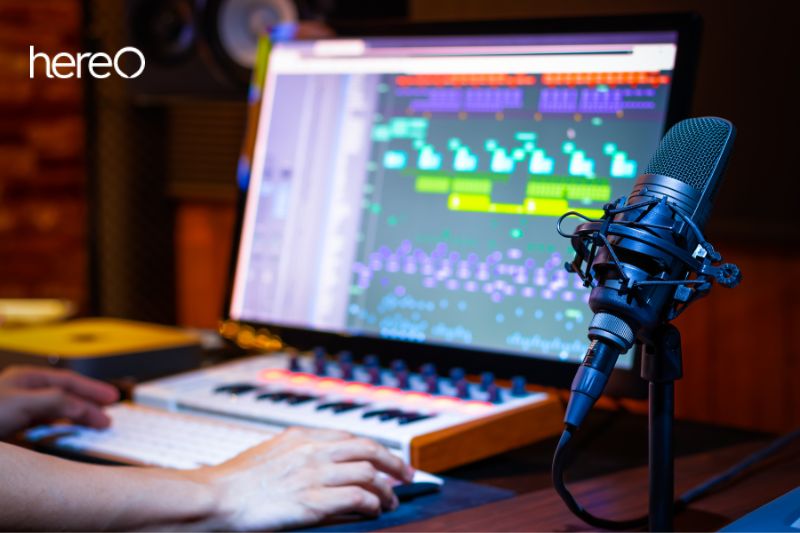
How do I record 4 mics at once?
You can buy a digital recorder or an audio mixer that allows you to connect numerous XLR microphones and record distinct audio tracks. This set-up is good for recording podcasts at home or in studios, and it has a wide range of uses.
How to use two microphones at the same time windows 10? How to use two microphones at the same time windows 11?
To get started, you will need to plug in the USB or XLR cables from each microphone into their respective inputs on your computer. Once the microphones are connected, you will need to adjust the settings in the audio device manager for your computer.
This can be done by accessing the “Recording Devices” tab in the sound settings. Here, you should be able to select each microphone and adjust the recording levels for each one.
What is a microphone splitter?
a device that directs the microphone’s signal to two or more inputs. Mic splitters are utilized for live recordings where the same microphones must feed the PA systems and the recording equipment as well as for live sound situations where microphones must concurrently feed FOH and monitor mixers.
Conclusion
Recording multiple microphones to a computer can be a great way to capture more audio sources, such as in music production, live broadcasting, and podcasting. With the right equipment and setup, anyone can create a multi-mic recording setup. If you’re ready to take your audio recording to the next level, why not give it a try?
Thank you for reading this article. HereOfamily hope you enjoy reading.
